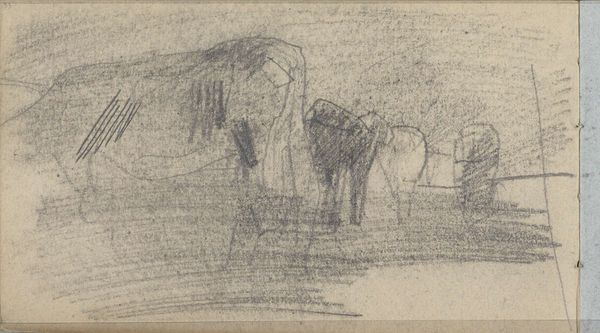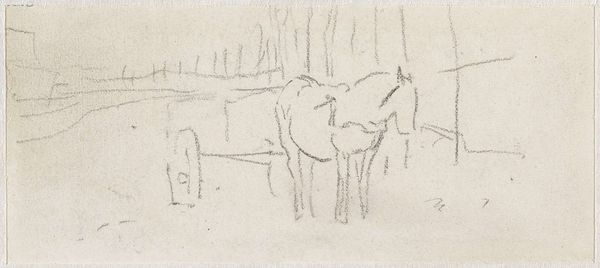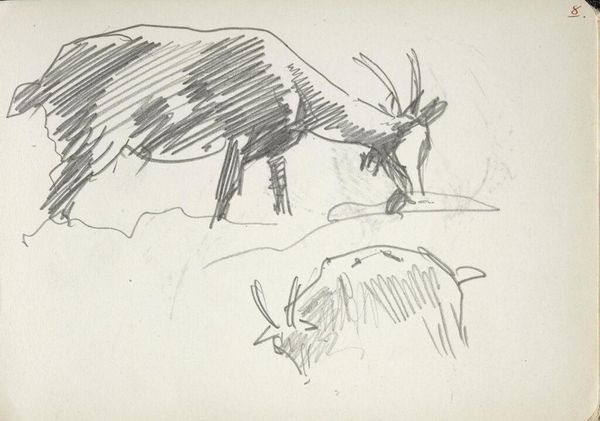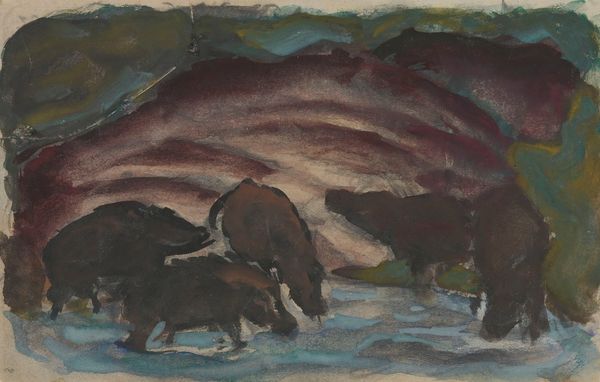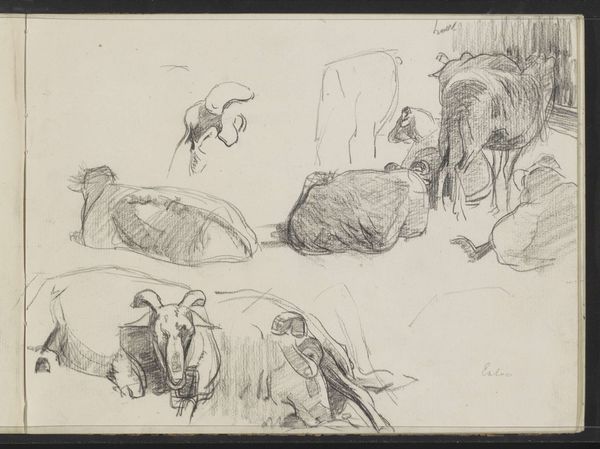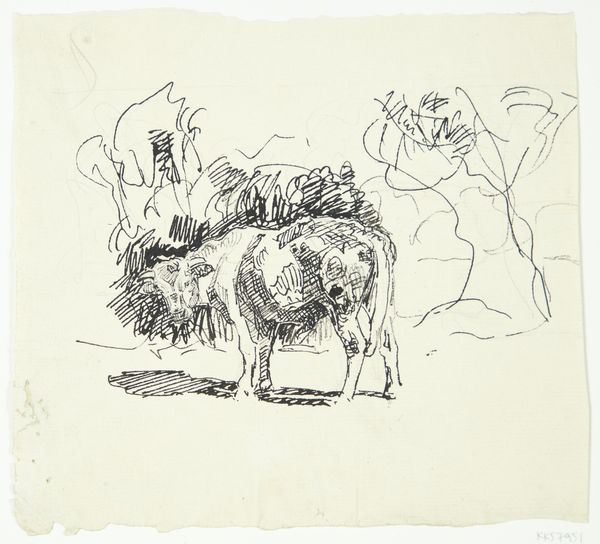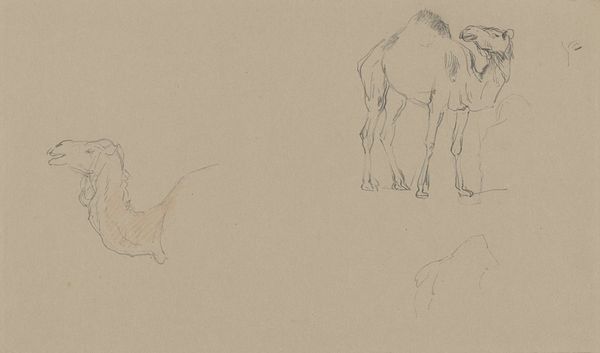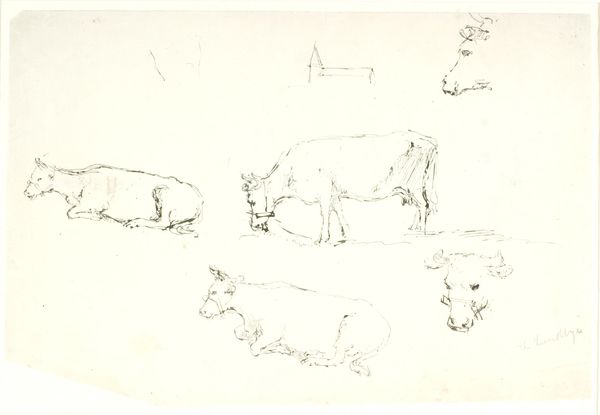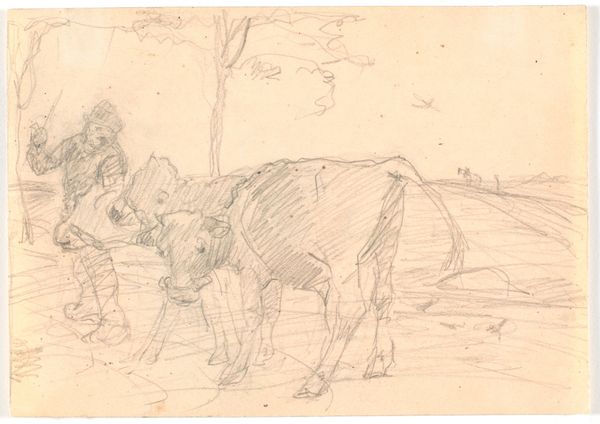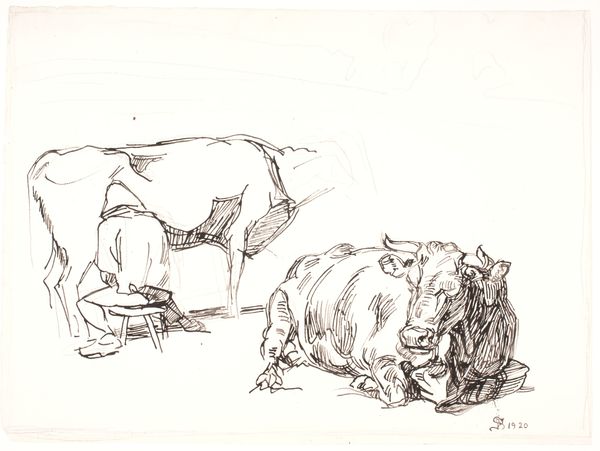
#
landscape illustration sketch
#
toned paper
#
incomplete sketchy
#
possibly oil pastel
#
personal sketchbook
#
underpainting
#
watercolour bleed
#
watercolour illustration
#
sketchbook art
#
watercolor
Dimensions: height 251 mm, width 322 mm
Copyright: Rijks Museum: Open Domain
Editor: Ferdinand Oldewelt's "Schapen in een stal," or "Sheep in a stable," is estimated to have been made sometime between 1867 and 1935. It looks like a watercolor sketch on toned paper. It feels very raw, almost like we are intruding on a private moment. What stands out to you? Curator: The raw, unfinished quality is key. This isn't just a depiction of sheep; it's an echo of a long history linking animals, spirituality, and survival. Notice how the undefined forms push us to project our own understanding onto them. Have you considered how sheep, symbolically, have moved through religious and artistic iconography? Editor: I guess I hadn't really thought about it that way. So you're saying it's not *just* farm animals in a barn? Curator: Not at all. Think of the "lamb of God" or pastoral scenes representing idyllic simplicity. Even outside direct religious contexts, sheep embody ideas of gentleness and vulnerability. And the quick, suggestive strokes... don’t they almost imply the fleeting nature of these concepts? Consider the cultural memory ingrained within these artistic choices. Editor: I see what you mean! The sketchiness makes it feel more universal, like it's tapping into something deeper than just one specific barn or flock. Curator: Precisely. The incompleteness invites contemplation on what’s been lost and what remains, playing with collective memory. Is this Oldewelt simply sketching or asking us to remember our primal connection to the natural world and the creatures within it? Editor: Wow, I didn't expect to get all that from a sheep sketch! Now I’m seeing all sorts of possible meanings in what I first thought was just a simple drawing. Thanks for showing me how to look beyond the surface! Curator: My pleasure. Keep questioning, keep connecting the images you see to their broader cultural story – that's where the true richness lies.
Comments
No comments
Be the first to comment and join the conversation on the ultimate creative platform.
